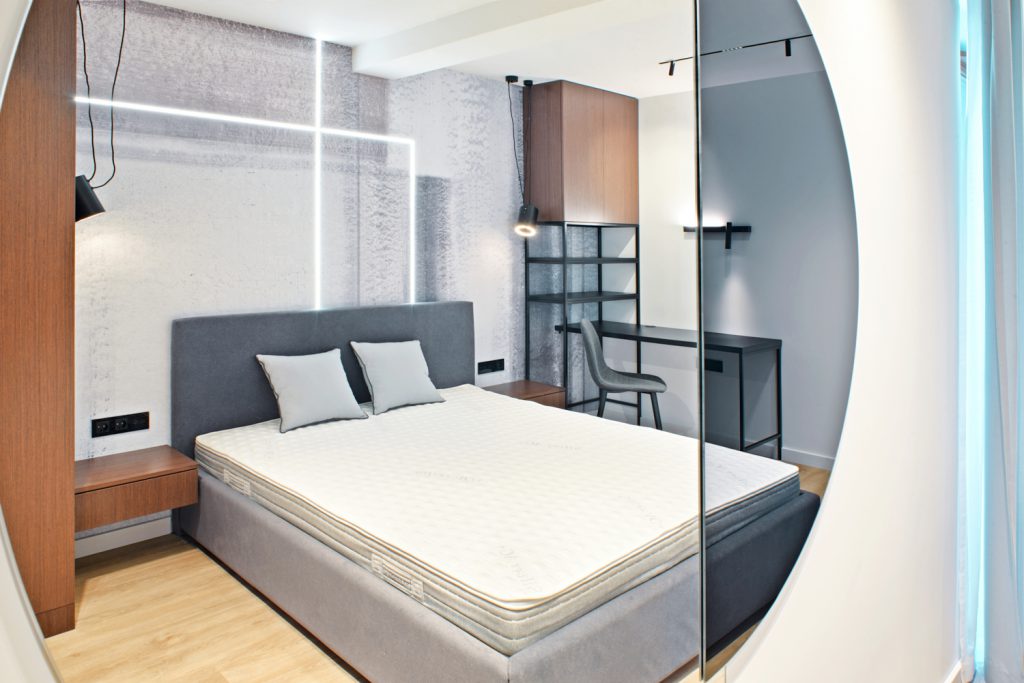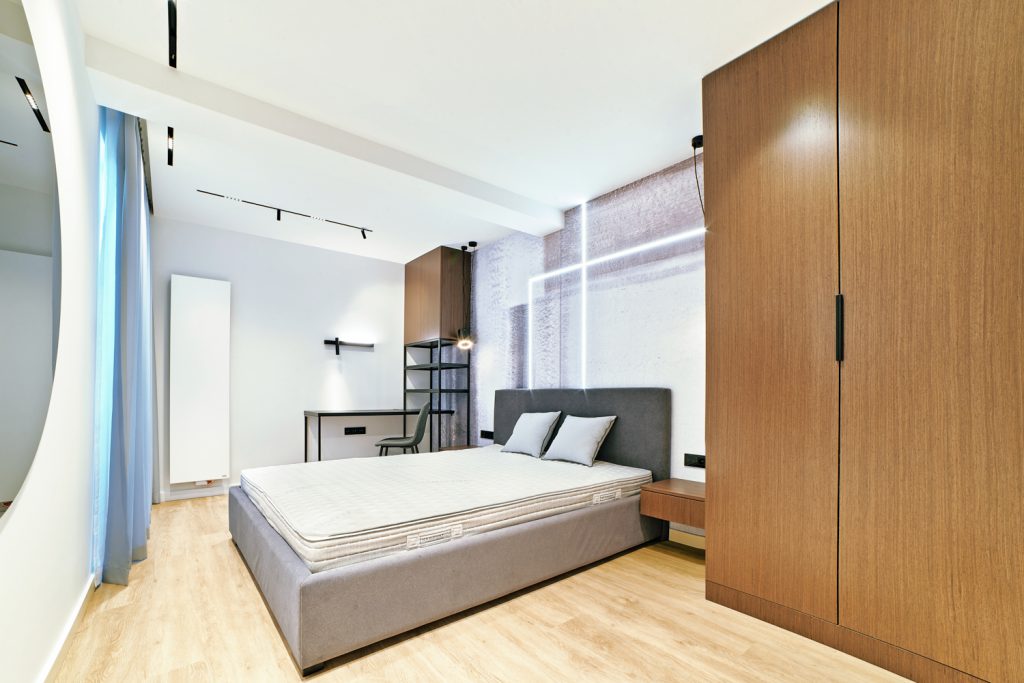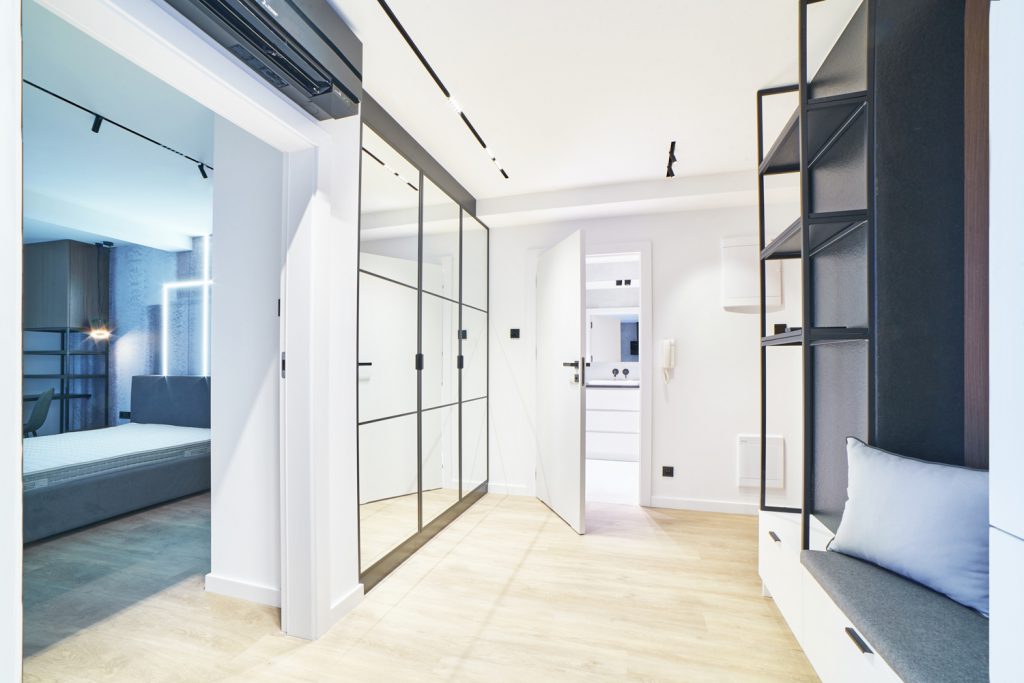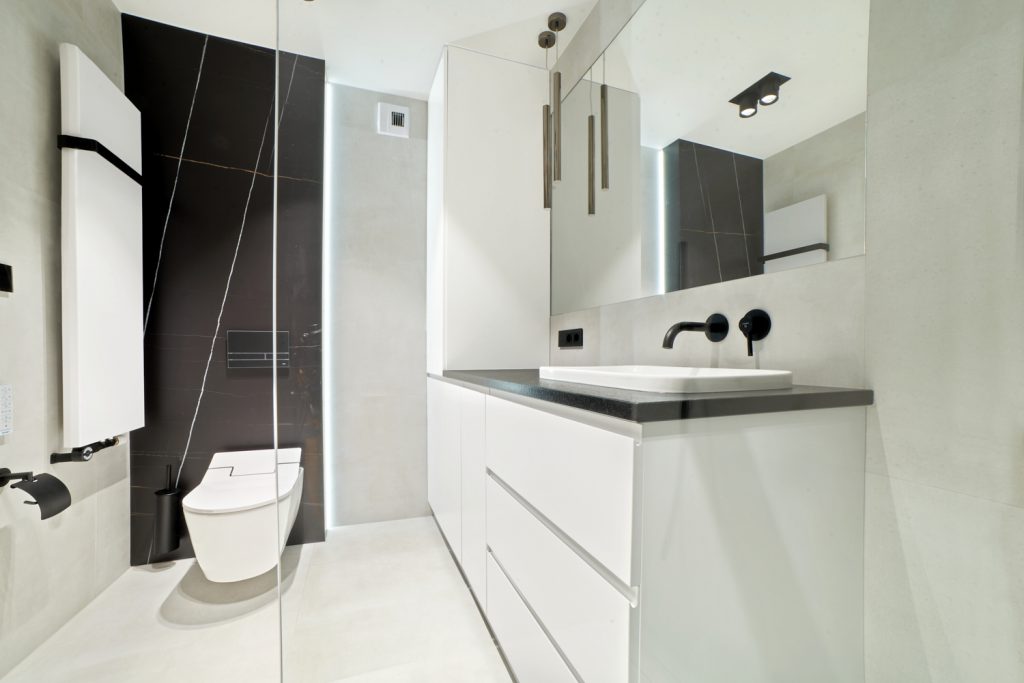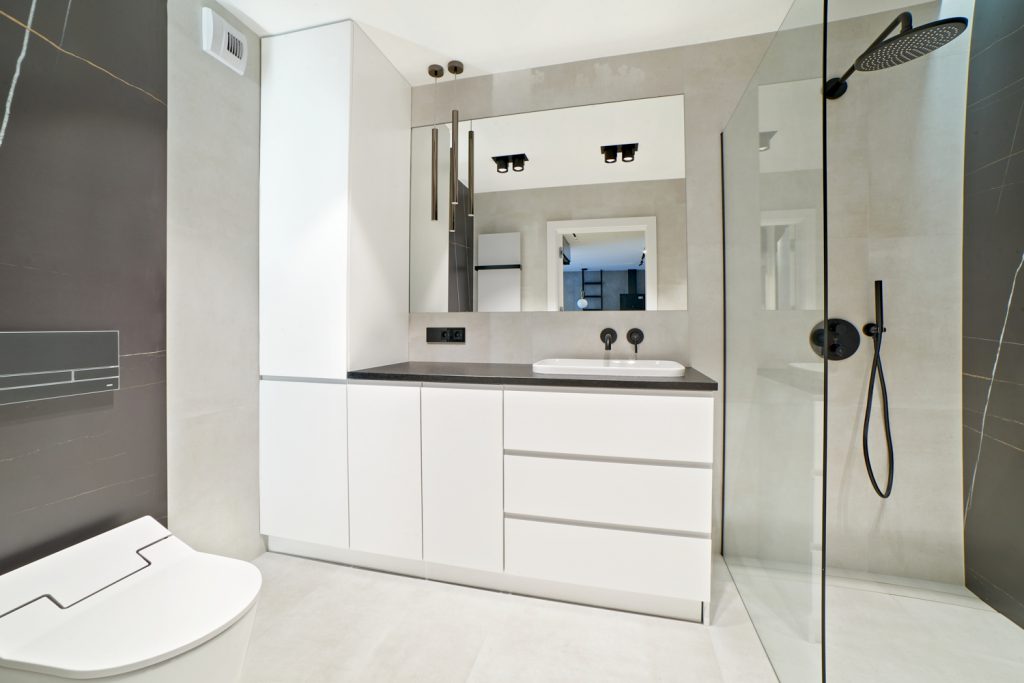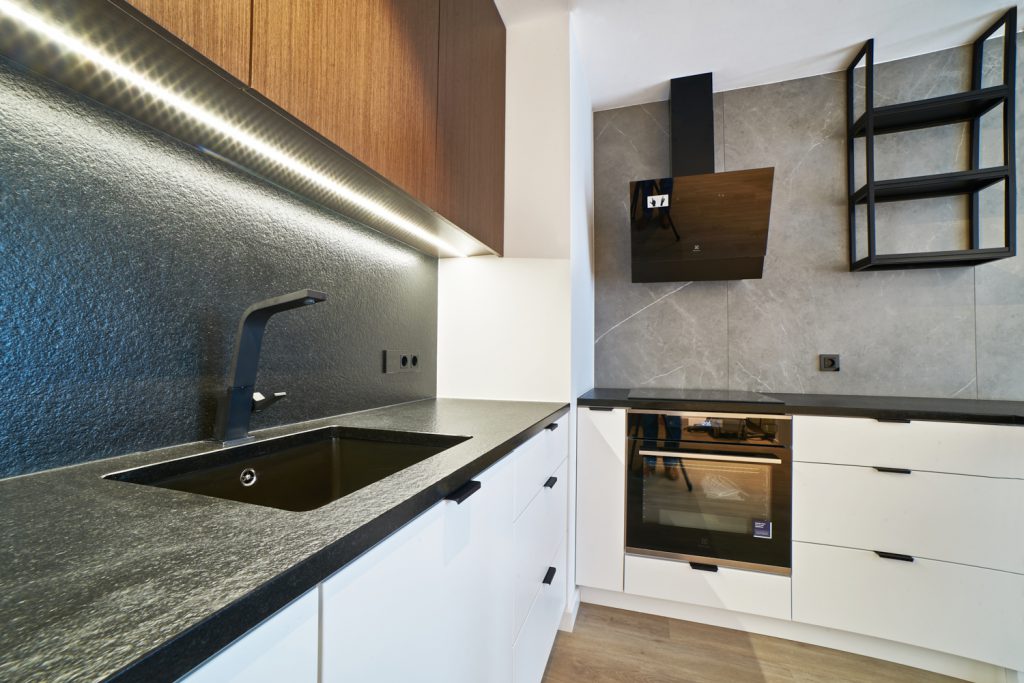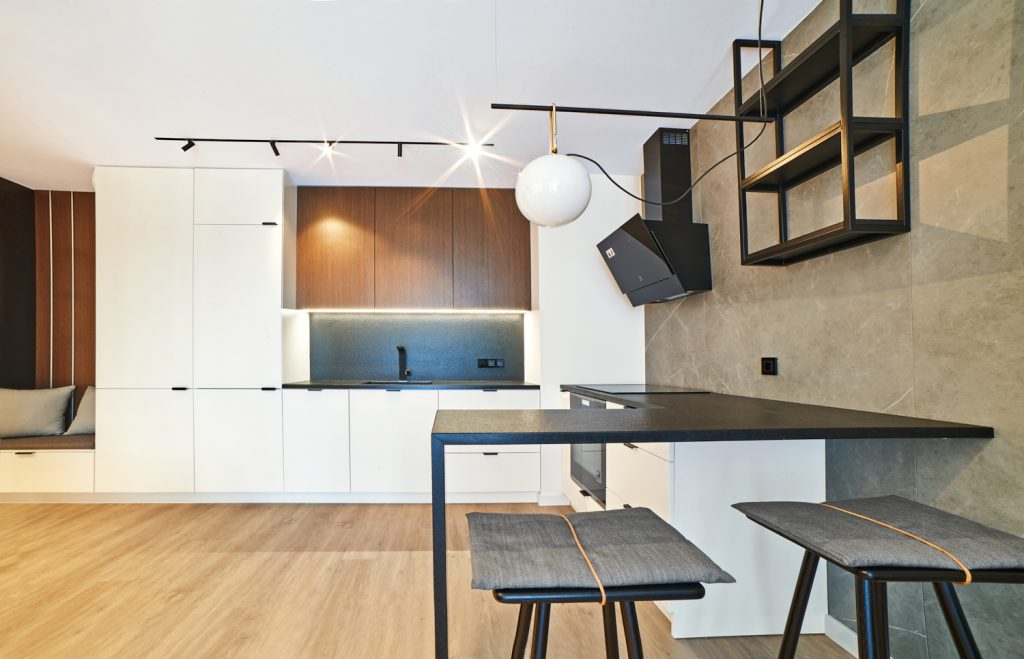What is a smart home and what are the benefits of smart home systems for you?
More and more people see the functionality of smart home systems, and smart devices are becoming more available and popular. Furthermore, the choice of intelligent solutions for homes is very wide and it is worth considering what exactly we are looking for.
At the beginning, it should be noted that a smart home consists of not only a tool, i.e. functional components (such as sockets, lighting or heating), but also a control system with which the tools are connected. In practice, this means that the control of individual devices and home settings may be possible from the level of one remote control or smartphone. Some programs allow you to personalize the settings and recognize voice commands, so that each user can assign a suitable configuration for himself.
What possibilities are worth paying attention to when deciding on smart home and apartment equipment?
In addition to all the functions that make life easier for the household members, smart systems can also communicate about disturbing behavior, the presence of gas or an attempted burglary. The main assumption of smart home systems is to provide users with safety, comfort and savings. There are many possibilities for the practical use of smart home systems: from lighting, heating and air conditioning control, through the management of locks, power supply, sensors and monitoring, to interaction with a voice assistant.
In the following article, we have presented the benefits of using individual smart home functions in your home or apartment. It is worth emphasizing that when considering investing in a smart home system, you should consider what functions we are looking for and which options would be for our interior. We asked an expert from Grenton, Mr. Marek Polit, for his opinion on smart home systems. The Grenton company is a Polish manufacturer that provides modern Smart home solutions to 21 countries.
“It’s best to start thinking about a smart home by identifying your needs. The first step is the “must have” list – a list of all devices and systems in the house that we would like to control the Smart system, and then the appropriate preparation of the electrical installation. Let’s verify the needs in terms of devices and systems, such as: air conditioning, ventilation, heating, and think about what wiring will be needed and what we want to control as part of a smart home. The second step is to discuss the details with the installer. You need to determine how the preparation of the electrical installation and the connection of the control to the system will proceed. Then it’s good to know how many touch panels we need on the walls in total and which drivers we want to replace with such panels.”
The following video shows the implementation of the SaniWell company in the “come in and live” standard, in which smart home systems were used
Intelligent lighting
The pandemic has changed the way and amount of time spent at home, and technological advances have made it possible to work or study remotely. The way of lighting the interior has also changed: in the past, the focus was on one main light source in the room, now at the design stage, many light sources are assumed in the room, and some of them are decorative. Intelligent lighting systems allow you to control the intensity and color of specific lamps, so that the user can choose the right light at any time of the day. Research shows that cold light in the morning has a stimulating effect, while setting a warm color of lighting for the evening has a relaxing effect on us. In other words, for better performance, we need a different light for work and a different light for relaxation.
Smart home allows you to configure and synchronize all lighting to specific scenery, e.g. for study or evening home theater. Modern LED bulbs are energy-efficient, so the use of such lighting is both ergonomic and economical. Motion sensors can illuminate selected rooms at night, e.g. with a minimum intensity of brightness, which translates into savings and user comfort.
Marek Polit notes that intelligent lighting improves the comfort of life, because it allows you to turn on / off each lamp using a smartphone, as well as group them into the so-called scenes – when we want to manage more than one lamp and set their use in a specific scenario. We can start the scene Fri. “I’m going to sleep” or “going to work” and then the pre-planned activities happen automatically. The light will be turned off if the motion sensors detect no presence within the next 10 minutes.
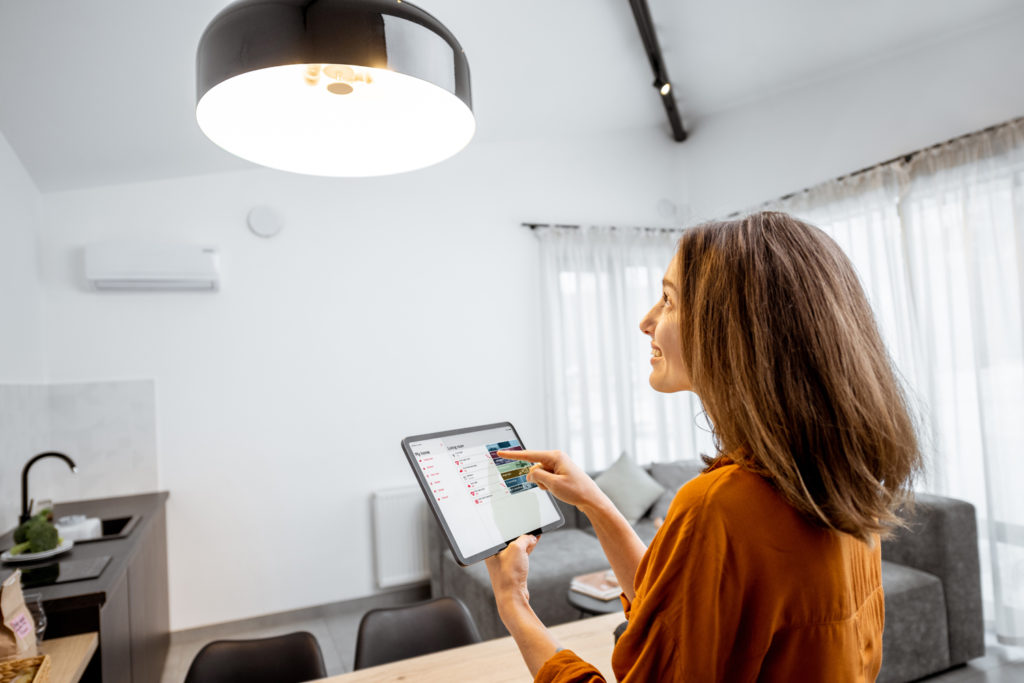
Heating and air conditioning control
Smart home systems allow you to program the right temperature according to the preferences of users. Regardless of the conditions outside, climate control in the house allows you to adjust the temperature to the right moment of the day, thus managing air conditioning and heating becomes economic and ecological. In practice, we can encounter a situation where, in the absence of the household members, the system turns off the heating, which will resume before the planned return of users. Or, on the contrary, and in accordance with the programmed mode, users returning home will be greeted with freshness, making summer evenings even more pleasant.
The systems offered by Grenton recognize the temperature or sunlight outside and can optimize the conditions inside each room. Smart home also allows you to control heat sources, combining in one environment the management of photovoltaics, heat pump or gas furnace. Controlling heating and ventilation using smart home systems allows you to control the temperature inside the rooms, manage the heating schedule, adjust the conditions inside the house depending on the outside temperature or even monitor the air quality in the apartment – all this can be managed directly from the smartphone application.
“The smart home system allows individual temperature control in each room. Heating can be freely combined with other elements, e.g. we close the door, lower the temperature and ventilate the room, or when the sun is shining outside the window, the blinds automatically go up, let the light inside and then we save on heating. All this is done with a single button, if we have planned such a scenario in advance. The system knows the temperature outside and thus can regulate the temperature in the house in an appropriate way, similar to heating in a car.”
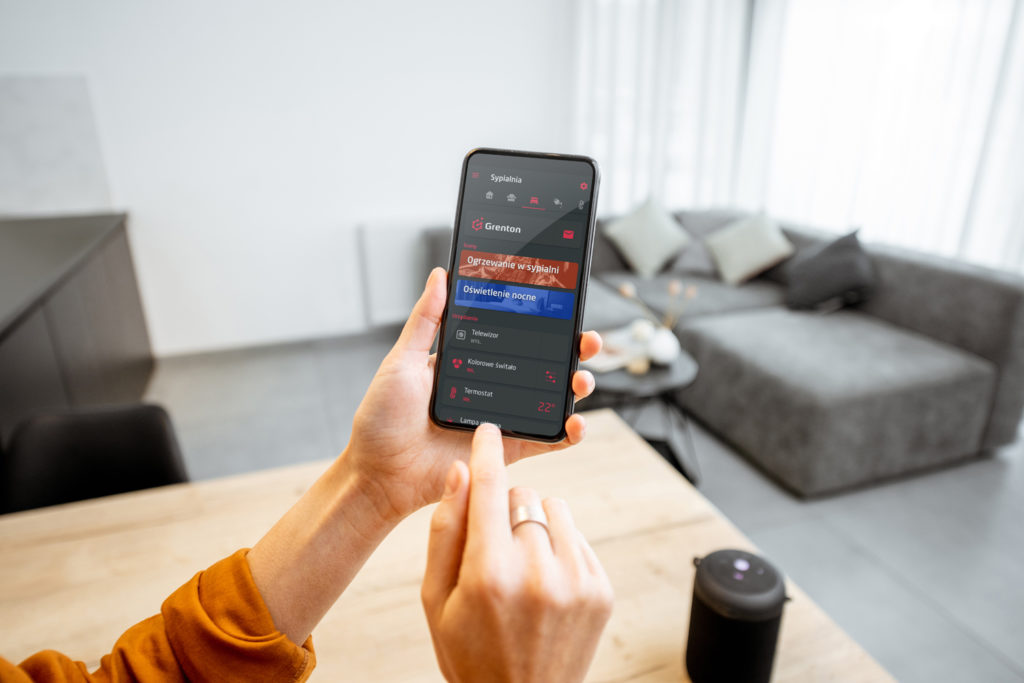
Safe home with smart home systems
A smart house is not only an ergonomic, functional and ecological house, but also a safe one. Smart functions include managing integrated flood, motion and smoke sensor systems, monitoring and even controlling locks, roller shutters, gates and power supply to specific sockets. Intelligent solutions are used not only in their private houses and flats, but also in apartments for rent, allowing them to control access for tenants. Such solutions are perfect for short-term rentals, during which the tenant can, for example, use a code to grant access to the apartment’s door. The smart home system communicates about uninvited guests in the garden, so that the user can react even when he is away from home. The sensors inform not only about the presence of smoke, but also about high air humidity, flooding or the presence of carbon monoxide.
All these functions leads into the safety and comfort of the household, even when all users are away from home, while the ability to control the blinds or disconnect selected sockets from the power supply of the sign not only provides peace of mind, but also smaller bills. Controlling the gate, driveway lighting with parking sensors makes returning home more comfortable and safer.
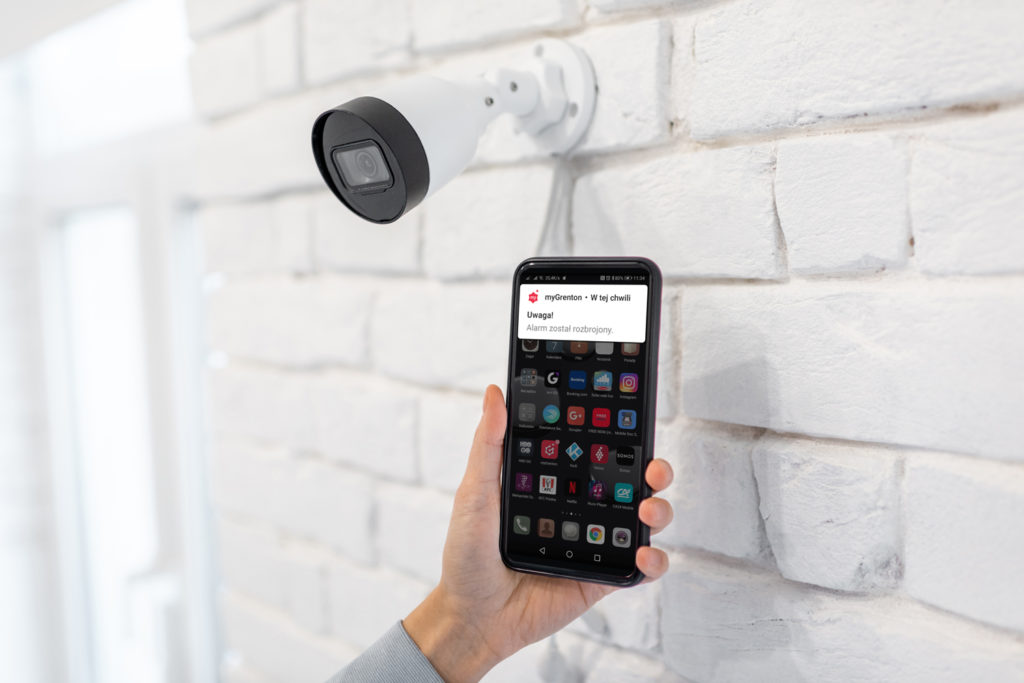
“The smart home system protects against burglary and flooding. Synchronization of the alarm with the roller shutters makes the system remember to close the roller shutters as soon as the entrance door is closed. In turn, the flood sensor in the kitchen and bathroom constantly monitors the situation and, if necessary, cuts off the water supply to the main connection. An intelligent home is also useful when there is a senior in need of care at home. Pressing the switch will activate the bedside lamp, and after holding down the hand for a while longer, e.g. it will inform that an elderly person urgently needs help.”
Smart assistant
A smart home is also a system that allows you to interact with audio and video devices, household appliances, mobile applications or IoT devices (Internet of Things, Internet of Things – a network of devices that allow data exchange without user interference). With one click or even a voice command, the user can control his favorite music, turn on automatic vacuuming, make a phone call, receive a reminder about a planned event or a notification about the end of washing clothes. All these operations are performed remotely – users are left to live more comfortably, surrounded by systems that do the rest.
“The Smart Home Grenton system works like a home assistant, which relieves the household members in many daily duties. It easily works with devices such as: coffee machine, vacuum cleaner, washing machine, mower or smart TV, and the integration options are practically unlimited. and adjusting the functions to the needs of the household. The same applies to the interface of the application, which allows you to remotely control your home. The appearance of the application is tailored to individual needs and habits. In each case, it can be designed according to specific requirements.”
The standard for the “come in and live” service provided by SaniWell is comprehensive interior finishing in accordance with the assumptions of the interior design. This means that the interiors executed by SaniWell are designed, finished and fully furnished – ready to move in. We provide and are responsible for all solutions that make the apartment more comfortable for users, including: home cinema, air conditioning, underfloor heating or smart home systems.
Benefits and savings provided by smart home systems in your home
Modern smart home systems allow you to manage tools and functions that increase the comfort and safety of users. Smoke, carbon monoxide detectors, presence simulators or monitoring contribute to the peace of the household members, and solutions such as heating, blinds and lighting control translate into electricity savings. This means that a properly configured smart home affects the ergonomics, economy and ecology of our home. Lighting, home theater and audio systems will ensure the right atmosphere when the user wants to experience a moment of relaxation, and the network of intelligent devices facilitates communication and management of daily duties. All this is available at your fingertips, directly from the smartphone application.
What types of smart home devices are the most popular?
According to experts from Grenton, the most popular elements of the smart home system are: roller shutters, heating and lighting. It is worth taking them into account both when we are planning to build a house and when we are going to buy a flat. The more things we consider at the very beginning, the easier it will be to plan the entire installation process and, for example, we will miss hammering walls when we want to add another light switch.
* The material was created in cooperation with the Grenton company. The author of the comments is Mr. Marek Polit.
